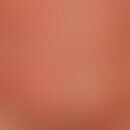Synonym(s)
DefinitionThis section has been translated automatically.
Hair dyeing with the natural dyes henna, indigo, later also with Rastik (hair dye from gall apples and metal salts) has been in use for several thousand years. Today every second woman dyes her hair. For men it is every tenth with an increasing tendency. Changes in the colour of the hair can be achieved with bleaching agents or hair dyes. Almost every second person who dyes their hair performs the procedure themselves. The chosen hair colours are strongly dependent on fashion trends and vary from culture to culture.
Basically, one can distinguish between 2 types of hair dyes:
- synthetic hair dyes (in Europe, about 100 chemicals are allowed: Madsen JT et al. 2016) )
- Natural hair colours: Natural hair colours and washable hair colours are wrapped around the hair shaft like a colour coat. They become less intense over time.
ClassificationThis section has been translated automatically.
There are washable temporary, semi-permanent and permanent products.
Temporary (washable) hair dyes can be removed with a hair shampoo after the first wash. They are based on the physical adhesion of a dye.
Permanent hair dyes cannot be washed out. A bleaching, for example, is always permanent. Commercially available permanent hair dyes consist of two components:
- One component consists of colourless oxidation bases. These are easily oxidizable, initially colourless dye bases, e.g. phenylenediamine, toluylenediamine, aminophenol, resorcinol. Furthermore, this component contains antioxidants such as sodium sulfite, sodium formaldehyde sulfoxylate or ascorbic acid as well as shaders. This component is supplemented by fatty alcohols and lanolin. These substances cause the creamy character of the mixture. Additionally, alkalizing agents like 1% ammonia water or similar substances (toluene, resorcinol or the allergologically relevant monoethanolamine) as well as different surfactants are included.
- A second component contains oxidizing agents such as hydrogen peroxide. The oxidizing agents initiate the actual colour formation.
Principle: The dyes migrate into the hair shaft which is swollen by the alkaline medium. There they are oxidized to complex dyes, whereby they chemically bond with the hair keratin. Only through the oxidation of the (colourless) dye bases by the hydrogen peroxide the actual dye is formed.
Professional hair dyes: their use is less suitable for the layman. They should be carried out by qualified personnel.
You might also be interested in
General informationThis section has been translated automatically.
The chemicals contained in the colorations can cause allergic and toxic reactions. An allergy to hair dyes can appear at the very first use of the product, but also years later. Even if a product has been well tolerated for years, this is no guarantee that no allergic reactions will occur in the future.
(Contact) allergic reactions usually manifest themselves as contact allergic eczema (type IV reaction) on the face or hairline. Initially, a few hours after the coloration, the scalp is itchy and taut. The symptoms usually disappear after 2-3 days, but inevitably reappear with the next hair coloration. They gradually increase, accompanied by severe itching, redness, swelling and acute wetting. Anaphylactic type I reactions (trigger: para-phenylenediamine) have also been described.
Main allergens in synthetic hair dyes:
- para-phenylenediamine (PPD).
Other potential sensitisers are:
- Toluenediamine (2,5-diaminotoluene) PTD
- 2-Amino-4-hydroxyethylaminoanisole sulfates
- Aminophenol
- Hydroxyethyl-p-phenylenediamines (e.g. in Sensual Colors by Schwarzkopf)
- Arylamines
- Hydroquinone
- Picramic acid and its salts which serve as oxidative hair dyes
- Resorcinol
- Lyric
- Ammonium persulfate (in bleaching agents)
Note: In case of known sensitization to PPD or PTD, many people continue to use products containing PPD despite sensitization. This can lead to severe allergic reactions. An alternative for these patients is the less sensitizing PPD derivative containing 2-methoxymethyl (ME) -PPD. In a study of 43 PPD/PDT sensitized patients, 38 patients showed no positive test reaction in a control test with 2-methoxymethyl. In the subsequent hair dyes that were used in normal everyday life, 29 (67%) tolerated these procedures. 7 persons showed minor 2 moderate allergic reactions.
NaturopathyThis section has been translated automatically.
Natural dyes:
- Henna: The use of henna is a traditional ritual that can be learned quickly. Depending on the product, the application time can range from five minutes to several hours (e.g. for natural hair colour and pure henna). Afterwards, it is best to gently lather up with water in the shower and rinse completely.
Other natural dyes.
- Reng: Occurs in leaves of the indigo plant. Reng is used together with henna.
- Chamomile: The flower dye apigenin (5,7,4`-trioxoflavone) of chamomile causes a yellowing of the hair.
- Rastik: Is a mixture of pyrogallol and iron, copper salts. Pyrogallol was obtained by roasting gall apples. The hair is coloured deep black by Rastik.
- Ash: extracts of the bark
- Acacia: extracts of the bark
- Make-up root (extracts of Radix )
-
Walnut: The green walnut shells contain a colouring substance which is very suitable for colouring hair. The colour result is a warm brown.
First the green walnut shells must be dried well and then ground into powder with a coffee grinder. The powder is mixed with hot water and some olive oil. This paste is spread on the hair. It remains on the hair until the desired hair colour is achieved.
- Alternative approach: 6-7 nut shells are boiled in 1l of water and forced through a sieve. The dye should not be creamy but also not totally liquid. It is picked up with a brush and the hair is brushed out with it. This procedure is repeated until the hair has taken on the colour.
For patients with contact allergies to common hair dyes, natural hair dyes are an alternative.
Hair that has already been permanently or semi-permanently dyed does not accept natural hair colours. It probably takes several colour changes until grey hair has completely disappeared.
With natural hair dyes you need your own experience, because every hair reacts differently. This is also the reason why there is no guarantee for an optimal result with natural hair colours. Everybody has to try the effect for himself.
Note(s)This section has been translated automatically.
General information about hair colouring:
Pregnancy and lactation: Chemical hair dyes should not be used during pregnancy and lactation. They can be absorbed through the scalp.
Allergy risk: There is also a risk of allergy for those who have been dyeing their hair for years without any problems. "Contact allergies can develop at any time during life. to have your hair professionally dyed. The hairdresser ensures that much less dye comes into contact with the scalp than at home when dyeing your hair yourself. This reduces the risk of sensitization.
Recommendations for dyeing at home: The following should be observed:
- If you have a sensitive or irritated scalp, it is better to avoid dyeing.
- Apply an oily skin cream along the hairline, along the neck and face to avoid contact with the skin.
- If you do not wash your hair before colouring, the scalp will be protected a little more by the natural fat and dandruff layer.
- Make sure that the scalp comes into contact with the dye as small as possible and as briefly as possible.
- Always wear gloves and under no circumstances exceed the exposure time.
- If you are unsure, you can consult a dermatologist beforehand as a precaution.
LiteratureThis section has been translated automatically.
- Becker LC et al(2009) Amended safety assessment of sodium picramate and picramic acid. Int J Toxicol 28(6 Suppl 2):205S-216S.
- Burnett CL et al.(2013) Safety assessment of 2-amino-4-hydroxyethylaminoanisole and 2-amino-4-hydroxyethylaminoanisole sulfates as used in cosmetics. Int J Toxicol 32(3 Suppl):25S-35S.
- Işik S et al.(2016)Severe Neck and Face Edema in an Adolescent-Delayed Hypersensitivity Reaction to Hair Dye. Pediatr Emerg Care. 2016 Oct 4 [Epub ahead of print]
- Kirchlechner S et al.(2016) Survey of sensitizing components of oxidative hair dyes (retail and professional products) in Germany. J Dtsch Dermatol Ges 14:707-715.
- Kock M et al.(20169 Continuous usage of a hair dye product containing 2-methoxymethyl-para-phenylenediamine by hair-dye-allergic individuals. Br J Dermatol 174:1042-1050. https://www.ncbi.nlm.nih.gov/pubmed/?
- Lyons G et al (2013) Hairdressers presenting to an occupational dermatology clinic in Melbourne, Australia. Contact dermatitis 68:300-306.
- Madsen JT et al(2016) 2-Amino-4-hydroxyethylaminoanisole sulfate - a coupler causing contact allergy from use in hair dyes. Contact dermatitis 74:102-104.
- Platzek T (2010) Risk from exposure to arylamines from consumer products and hair dyes. Front Biosci (Elite Ed) 2:1169-1183.
- Pónyai G et al(2016) para-Phenylenediamine Hypersensitivity: A Report From Budapest, Hungary, 2007-2014Dermatitis 27:303-307.
- Rameshk M et al (2016) Medicinal Herbs Affecting Gray Hair in Iranian Traditional Medicine. Iran J Med Sci 41(3 Suppl):42.
- Zahir A et al.(2016) Tolerance to a Hair Dye Product Containing 2-Methoxymethyl-P-Phenylenediamine in an Ethnically Diverse Population of P-Phenylenediamine-Allergic Individuals. Dermatitis 27:355-361.






